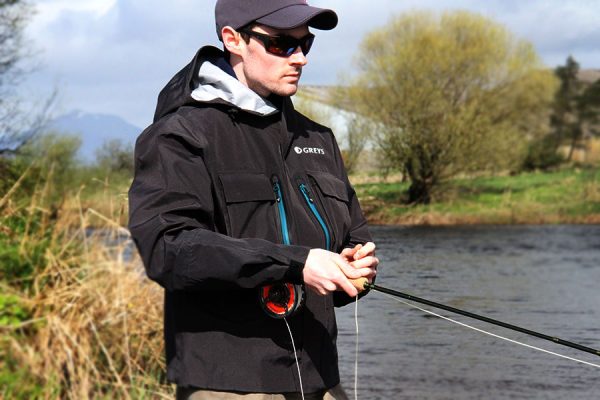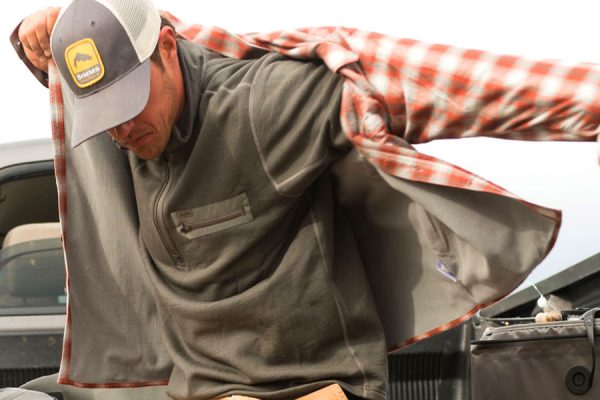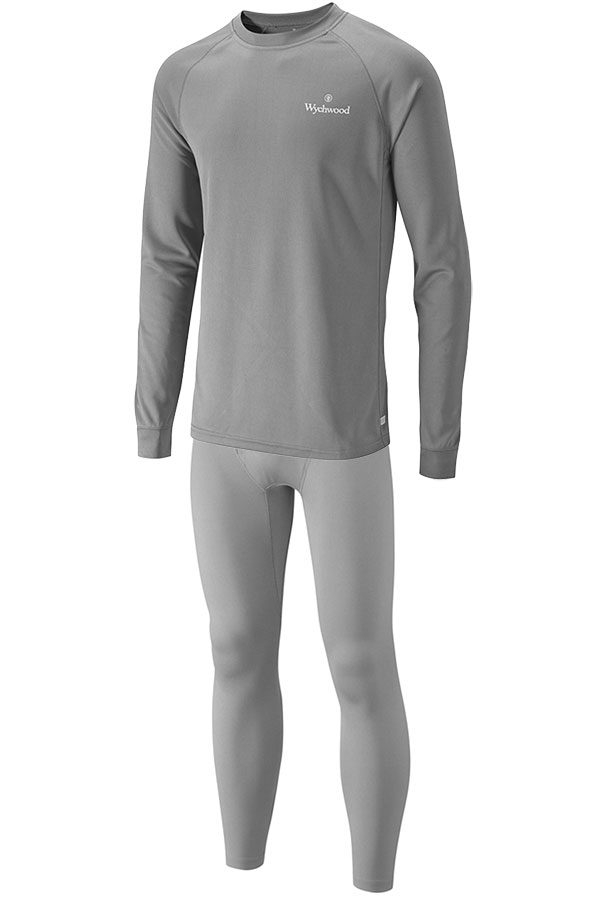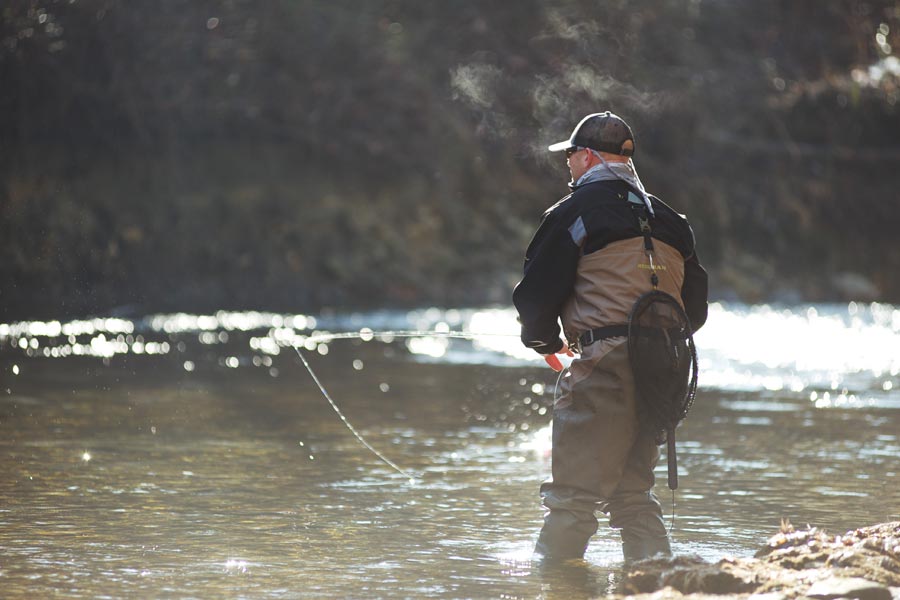Layering your fishing clothing properly will help improve your comfort on the bank, boat or river. It will help reduce perspiration, regulate heat, and improve overall mobility. In this article, we will breakdown the benefits of using certain materials and where and when they should be used in conjunction with each other for optimum performance.
The 4 key factors to consider are:
- 1. Materials
- 2. Moisture
- 3. Mobility
- 4. Layers
Materials
The majority of fishing base layers use 2 main types of materials, synthetic fibres and merino wool.

Correct Layering Of Clothing Will Increase Comfort On The Bank
Synthetic fibres
These are hard wearing lightweight materials that wick moisture (draw moisture away from the body) and disperse it over the surface of the material, this helps regulate body heat. The quick drying and elasticity properties of synthetic base layers provide comfort and mobility. Synthetic materials are usually better value for money and are ideal for people looking for a base layer on a budget.
- Advantages:
- – Extremely durable
- – Great wicking properties
- – Quick drying
- – Lightweight
- – Great elasticity properties
Merino wool
Merino wool comes from Merino sheep and is a naturally warm, lightweight and breathable material that offers insulation even when wet. Merino wool provides good mobility as well as a soft and comfortable feel due to the light and fluffy characteristics of the wool – which does not irritate the skin. An antimicrobial fibre, it deters bacteria and subsequent odour, making it odour free, which means it can be worn over and over without being washed and still smell fresh. This provides great comfort throughout the day, even during a very active fishing session. Merino wool is good at drawing moisture away from the body but it’s not as efficient as synthetic materials.
- Advantages:
- – Comfortable to wear
- – Great insulation properties
- – Great breathability attributes – regulates heat
- – Odour resistant
- – Good wicking properties
Moisture
One misconception is that people think breathable layers will magically stop them sweating. You still perspire in breathable clothing especially if you are doing strenuous activities in them. Choosing the right layers will help draw the moisture out, while still regulating body heat.This is why it is important to select the right layers for the activity and conditions.
Avoid wearing any cotton products! Cotton products soak up and hold moisture and then draw heat away from the body, causing chills.
It’s also important to remember that the neoprene socks on your breathable waders aren’t breathable. Feet can get quite sweaty and when they are drenched in sweat they can begin to feel cold and damp. We recommend using a dual sock method – a high nylon base sock, with a thicker wool sock over it. We recommend a Merino wool based sock as this will wick moisture, has antibacterial properties and regulates heat to provide comfort.

Correct Layering Will Allow For Good Mobility
Mobility
Just imagine wearing bulky clothing that restricts your ability when casting, puts extra strain on your muscles and also reduces your ability to perform distance casts due to muscle fatigue and poor mobility. Not only uncomfortable, it could end up costing you fish. This is what happens when you don’t layer your clothing properly. Investing in quality base layers offer elasticity in the fibres and a fit snug to the body whilst providing complete movement. It is best to make sure that you use our manufacturer sizing charts to make sure you choose the right size.
Layering System
Using a layering system gives you a lot more flexibility in the conditions and environments you fish. It also allows you to adjust the layers to regulate your heat and overall comfort whilst fishing.

A Perfect Layering System Will Regulate Heat And Wick Moisture Away From The Body
Base Layers
Your base layer is worn close to the skin and is designed to provide a layer of warmth and wick moisture – absorb sweat from the skin, moving it to the surface of the garment. In summer, base layers will help keep you cool due to its wicking moisture properties and in the winter months, it will prevent moisture from going cold and settling on your skin, which will help keep you warm. One decent base layer can help provide an extremely versatile addition to your fishing clothing.
- Advantages:
- – Sits snug to the skin to regulate heat
- – Removes perspiration from the body
- – Ideal for active activities during warmer months

A Good Base Layer Will Sit Snug To The Body While Drawing Moisture Away From The Body
Mid Layers
Mid layers are used for the cooler months of the year, made up of micro fleeces, hoodies or fleeces. The layer is used in conjunction with a good base layer will trap a layer of air, which helps to retain heat.
- Advantages:
- – Worn over base layer
- – Further wicks moisture from the base layer
- – Made up of micro-fleece, hoodies or fleece jackets
- – Provide additional warmth

A Good Outer Layer Will Keep Out The Toughest Of Elements
Outer Layer
Outer layers should be waterproof and breathable and work in conjunction with the base and mid layers. So while the outer layer keeps out rain, wind and snow, it will also keep sweat at bay due to its breathable properties. While the base and mid layers will continue to wick moisture and provide comfort and warmth. Outer layers are mainly made up of waterproof, softshell or hardshell jackets and are designed to keep the elements out.
- Advantages:
- – Protects you from rain, wind and snow
- – Allows perspiration to pass through due to its breathability
- – Lightweight and easy to transport
For more information on fishing clothing and cloth layering systems, contact the Angling Active team





